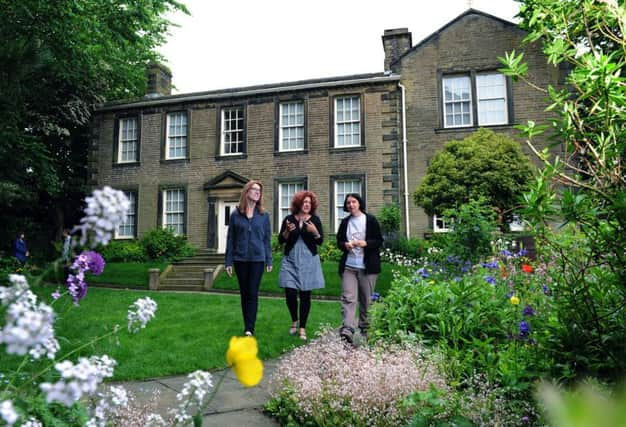When Virginia Woolf met the relics of Charlotte Bronte at Haworth


But the writer Virginia Woolf also had links with Yorkshire, which are being celebrated in the run up to a conference in Leeds, which starts today.
The novelist was 22 when she visited the home of the Brontes at Haworth on a day when “a real northern snowstorm had been doing the honours of the moors.”
Advertisement
Hide AdAdvertisement
Hide AdShe later wrote about her trip to the “dingy and commonplace” parsonage in her first ever published piece, “Haworth, November 1904.”
“There is nothing remarkable in a mid-Victorian parsonage, though tenanted by genius” she wrote, “the only room which awakens curiosity is the kitchen, in which the girls tramped as they conceived their work.” But she was moved by the ‘little personal relics” of Charlotte Bronte: “Her shoes and her thin muslin dress have outlived her.”
Delegates to the annual conference on Woolf, held this year at Leeds Trinity University, beat a path to the parsonage yesterday to see the author’s name in the visitor book under her maiden name Stephen, and then onto Giggleswick, where Woolf was staying with her cousin Will Vaughan, Headmaster of Giggleswick School and his wife Madge.
In its 26 years, it is the first time the annual Virginia Woolf conference has been hosted in Yorkshire and only the fourth time in the UK.
Advertisement
Hide AdAdvertisement
Hide AdTo her many fans she is one of the most influential writers of the 20th century, although some readers find her experimental stream-of-consciousness prose impenetrable.
But her novels hold enduring interest and several have been turned into films, including Mrs Dalloway, To The Lighthouse and Orlando.
Woolf visited Yorkshire several times - in her third novel Jacob’s Room, Betty Flanders and her three boys live in Scarborough and in her last novel The Years, one of the characters, Kitty Lasswade, comes up to live in Yorkshire.
A highly strung child, Woolf suffered from undiagnosed bipolar disorder and after a life lived with “feverish intensity” she died after wading into a river with a large stone in he pocket, having left a loving note for her husband Leonard.
Advertisement
Hide AdAdvertisement
Hide AdDr Jane de Gay, one of the organisers, said: “She grew up in London and to get to the north and see a very different world I think she found very stimulating. She loved walking, it helped her write.
“I’ve researched Virginia Woolf for years and sometimes peoples’ first question is why did she kill herself?
“It’s such a dismissive approach to her work. Although she had times of depression, she had great joie de vivre, a love of life, family, friends, parties and the excitement of London.
“Her love of life is in her work as is her intensity of emotion. She is demanding as an author, but her novels are worth working on - I think people who make the effort get great enjoyment out of them.”
The conference explores the theme of heritage - including how as an author she has been appropriated by the heritage industry. It runs until this Sunday.